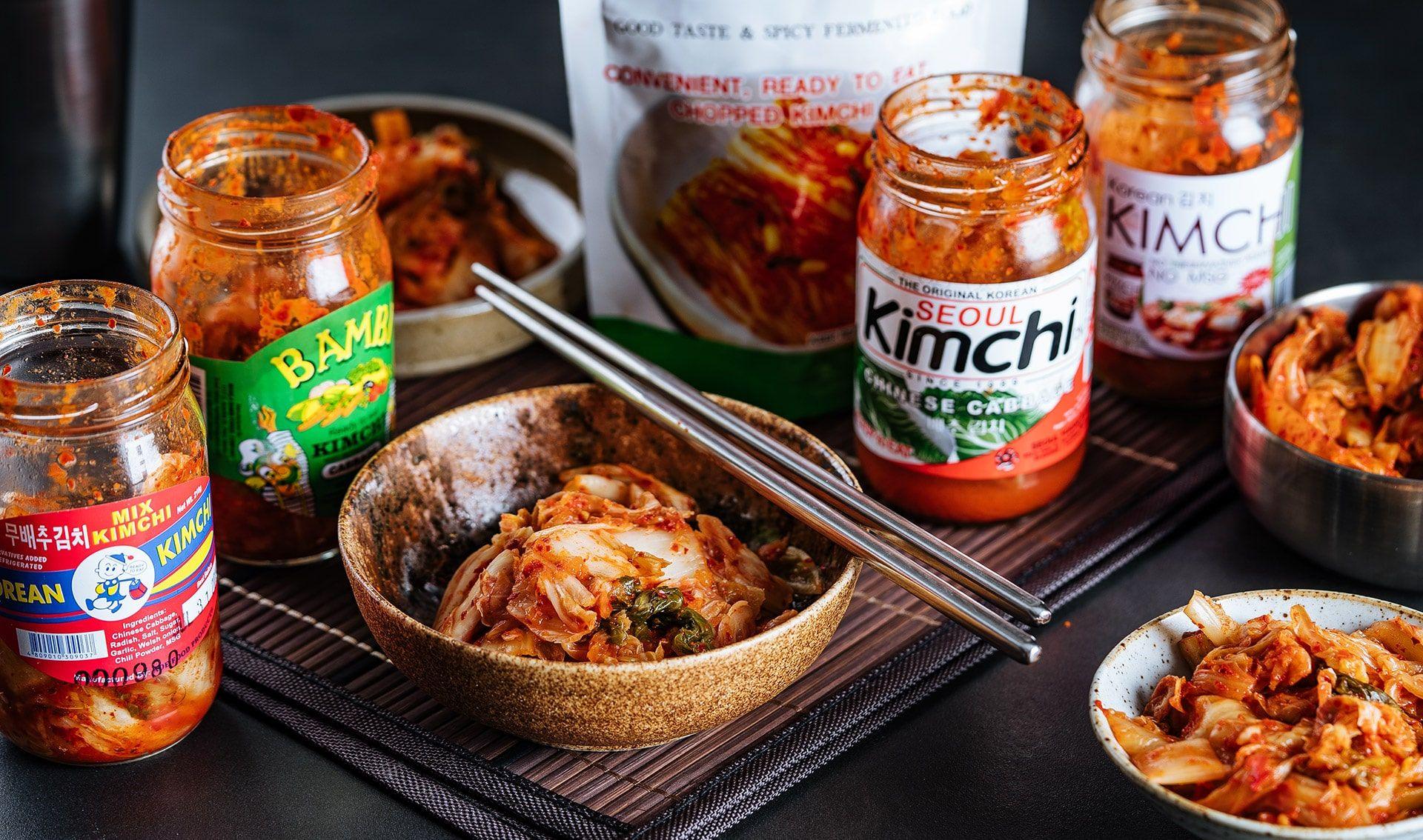A staple in Korea households (argued to have already been around some 1,500 years ago), kimchi is made with vegetables (most often cabbage or radish) fermented with lactic acid bacteria—a natural process which comes about as the veggies are cured in a mixture of salt, (occasionally) sugar, and other flavorings (hot pepper powder, ginger, garlic, fish sauce, and the like).
Though the best brands would expectedly come from Korean groceries and households, you’ll also find more commercialized versions in local supermarkets. How do they compare?
ADE
With its deep aroma and fiery-red hue, you might think ADE’s kimchi packs a spicy punch—but a bite reveals it’s actually quite the opposite. While it gives you a decent mid-level tang and ample garlicky depth, there’s hardly any heat. This makes it a good pick for the spicy-averse, but those looking for a good chili bite are bound to be disappointed.
Bambi
Perhaps the easiest to find across local supermarkets, this local brand also goes for a vivid, fiery-red in color and hits you with a powerful chili aroma. Though not too salty, this is the strongest-tasting kimchi of the bunch with an in-your-face vinegary sourness and sweat-inducing heat—though it oddly falls short on the fish sauce notes that would’ve helped support its impactful punch. If anything, its no-holds-barred piquancy makes it your best bet for balancing out oily or very fatty meats (e.g., BBQ pork neck) or for cooking the greasiest, most hangover-friendly bowl of kimchi fried rice with.
